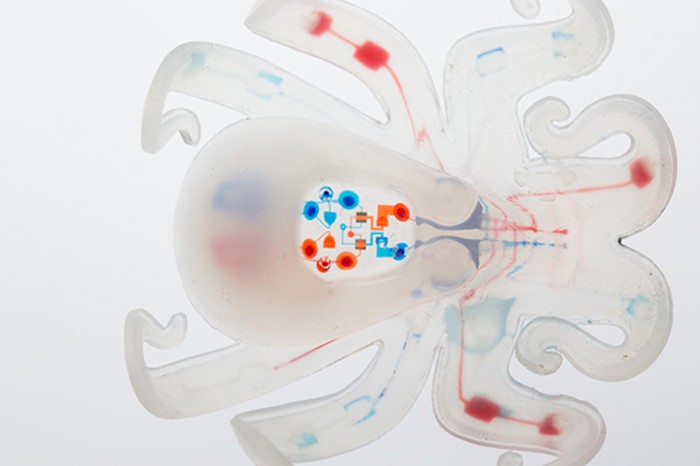
Soft robotics could revolutionise the way we interact with machines. But without rigid control systems like circuit boards and batteries, researchers have struggled to build compliant robots. Now, a team of researchers at Harvard University in the United States have unveiled Octobot, the first autonomous, untethered, entirely soft robot.
Led by Charles River Professor of Engineering and Applied Sciences Robert Wood and Jennifer A. Lewis, the Hansjorg Wyss Professor of Biologically Inspired Engineering at the Harvard John A. Paulson School of Engineering and Applied Sciences (SEAS), the robot could pave the way for a new generation of such machines.
“One longstanding vision for the field of soft robotics has been to create robots that are entirely soft, but the struggle has always been in replacing rigid components like batteries and electronic controls with analogous soft systems and then putting it all together,” Wood told Harvard News. “This research demonstrates that we can easily manufacture the key components of a simple, entirely soft robot, which lays the foundation for more complex designs.”
Lewis explains the team’s hybrid approach to the development of the robot. “We were able to 3D print each of the functional components required within the soft robot body, including the fuel storage, power, and actuation, in a rapid manner,” said Lewis. “The octobot is a simple embodiment designed to demonstrate our integrated design and additive fabrication strategy for embedding autonomous functionality.”
The structure of the robot was inspired by the octopus, an animal able to perform amazing feats of strength with no internal skeleton. To replicate this, the researchers used a pneumatic reaction, gas powered by pressure. A small amount of liquid fuel inside of Octobot is transformed into a large amount of gas, which flows into the Octobot’s arms and inflates them like balloons, explains Harvard News.
The research was published in the science journal, Nature.






